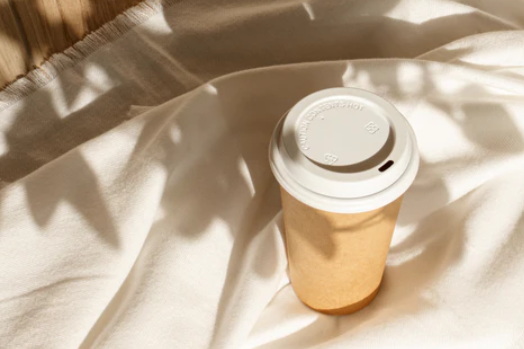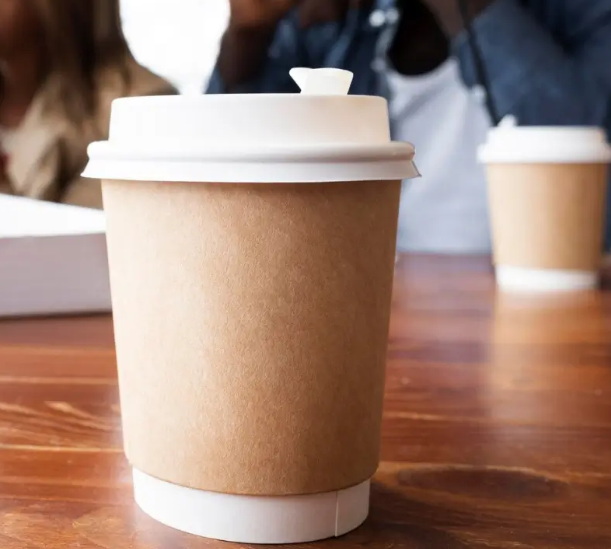
Content Menu
● Introduction to Disposable Cup Lids
>> Common Materials for Disposable Cup Lids
● Types of Disposable Cup Lids for Hot Beverages
>> 1. Traditional Hot Cup Lids
>> 2. Flip Lids
>> 3. Sip-Through Lids
>> 4. Dome Lids
● Eco-Friendly Options
● Market Trends and Innovations
● Choosing the Right Lid for Your Business
● Impact of Sustainability on Consumer Choice
● Emerging Trends in the Disposable Lids Market
● Conclusion
● FAQ
>> 1. What are the most common materials used for disposable cup lids?
>> 2. What type of lid is best for hot beverages with foam or toppings?
>> 3. How do I choose between plastic and eco-friendly lids?
>> 4. What are the benefits of using sip-through lids?
>> 5. Can I customize the design of my disposable cup lids?
● Citations:
Choosing the right disposable cup lid for hot beverages is crucial for both convenience and sustainability. With various types of lids available, each designed for specific needs, understanding their features and applications can enhance the customer experience while reducing environmental impact. This article will guide you through the process of selecting the perfect disposable cup lid for hot beverages, exploring different materials, designs, and eco-friendly options.

Introduction to Disposable Cup Lids
Disposable cup lids are an essential component of the beverage industry, particularly for hot drinks like coffee and tea. They provide a secure seal, prevent spills, and maintain the temperature of the beverage. The choice of lid depends on factors such as the type of drink, customer preference, and environmental considerations.
Common Materials for Disposable Cup Lids
Disposable cup lids are made from various materials, each with its pros and cons:
- Polystyrene (PS) Lids: These are the most common type, known for their cost-effectiveness and recyclability. PS lids are suitable for hot beverages and come in designs like pop-open and flat lids.
- Polypropylene (PP) Lids: Harder than PS lids, PP lids are more versatile and often used with PP cups. They are less recyclable than PS but offer durability.
- Polyethylene Terephthalate (PET) Lids: Commonly used for cold drinks, PET lids are clear and sleek. They are not typically used for hot beverages.
- Compostable Lids: Made from materials like PLA (polylactic acid), these lids are eco-friendly and compostable in industrial facilities. They are gaining popularity as a sustainable alternative.
- Paper Lids: Emerging as a fully biodegradable option, paper lids are made from pressed paperboard. They are less durable than plastic but align with sustainability goals.
Types of Disposable Cup Lids for Hot Beverages
The design of the lid plays a significant role in enhancing the drinking experience. Here are some common types of disposable cup lids suitable for hot beverages:
1. Traditional Hot Cup Lids
These lids have an oval hole and a flat edge, making them easy to drink from and stack. They are ideal for basic hot beverages like coffee and tea without foam or toppings.
2. Flip Lids
Flip lids are travel-friendly, allowing users to open and close the sipping hole. This feature makes them suitable for customers on the go and enhances the overall drinking experience by allowing the aroma of the coffee to be appreciated.
3. Sip-Through Lids
These lids allow customers to drink directly without removing the lid, reducing spills and burns. They are designed with a small opening that can be closed when not in use.
4. Dome Lids
Although more commonly used for cold drinks with toppings, dome lids can also be used for hot beverages if they have a design that accommodates a straw or spoon opening.
Eco-Friendly Options
As environmental concerns grow, eco-friendly disposable cup lids are becoming increasingly popular:
- Compostable Lids: Made from renewable resources, these lids are designed to break down in industrial composting facilities, reducing plastic waste.
- Paper Lids: Fully biodegradable and recyclable, paper lids are an alternative to plastic, aligning with sustainability goals. For example, Vegware's pull-back tab paper lids are designed for hot cups, offering a practical and sustainable solution for sipping hot drinks on the go[2].
- Future Smart Duo Fiber Lids: These lids, developed by Huhtamaki, are made from 100% renewable plant-based materials, offering a plastic-free and compostable option for hot beverages[3].

Market Trends and Innovations
The disposable cup lid market is witnessing significant growth and innovation, driven by consumer demand for sustainability and convenience:
- Product Innovation: Companies are focusing on creating high-quality, customizable, and smart packaging solutions. For instance, SOFi launched a biodegradable cup that eliminates the need for a separate lid, using spunlace cotton that biodegrades naturally[1].
- Reusable Options: Reusable plastic cups are gaining traction as an alternative to single-use cups. Berry Global Inc. has introduced reusable PP cups that are dishwasher safe and recyclable, offering a sustainable option for hot beverages[1].
- Sustainability Focus: The market is shifting towards eco-friendly materials like bioplastics and plant fibers. Biodegradable lids made from sugarcane bagasse or PLA are becoming popular for reducing plastic waste[5].
Choosing the Right Lid for Your Business
Selecting the appropriate disposable cup lid for your business involves considering several factors:
- Customer Preference: Some customers prefer lids that allow them to smell their coffee, while others prioritize spill prevention.
- Beverage Type: Different lids suit different types of drinks. For example, flip lids are ideal for hot beverages on the go.
- Environmental Impact: Eco-friendly options like compostable or paper lids can enhance your brand's sustainability image.
- Cost and Durability: Plastic lids are generally more durable and cost-effective, but their environmental impact is higher.
Impact of Sustainability on Consumer Choice
Sustainability is increasingly influencing consumer preferences, with many opting for eco-friendly packaging solutions:
- Biodegradable Lids: These lids decompose in 90 days or less under industrial composting conditions, reducing plastic pollution and aligning with global sustainability initiatives[5].
- Brand Reputation: Companies adopting sustainable practices, such as using biodegradable lids, can enhance their brand reputation and attract environmentally conscious consumers[5].
Emerging Trends in the Disposable Lids Market
The disposable lids market is expected to grow significantly, driven by innovations in sustainability and hygiene:
- Market Size: The market is projected to reach USD 5 billion by 2033, with a CAGR of 4.5%[4].
- Sustainability and Hygiene: Manufacturers are focusing on developing lids that not only reduce plastic waste but also minimize contamination risks, ensuring both sustainability and hygiene[4].
Conclusion
Choosing the right disposable cup lid for hot beverages is a balance between customer satisfaction, environmental responsibility, and operational efficiency. By understanding the different types of lids available and their applications, businesses can enhance the customer experience while contributing to a more sustainable future.

FAQ
1. What are the most common materials used for disposable cup lids?
The most common materials for disposable cup lids are Polystyrene (PS), Polypropylene (PP), and Polyethylene Terephthalate (PET). However, eco-friendly options like Compostable Lids and Paper Lids are gaining popularity.
2. What type of lid is best for hot beverages with foam or toppings?
For hot beverages with foam or toppings, Dome Lids are not typically used. Instead, Traditional Hot Cup Lids or Flip Lids are more suitable, as they provide a simple and spill-free experience.
3. How do I choose between plastic and eco-friendly lids?
When choosing between plastic and eco-friendly lids, consider your brand's sustainability goals and customer preferences. Eco-friendly options like compostable or paper lids reduce environmental impact but may be less durable.
4. What are the benefits of using sip-through lids?
Sip-through lids offer convenience by allowing customers to drink directly from the lid, reducing spills and burns. They are ideal for hot beverages and enhance the on-the-go drinking experience.
5. Can I customize the design of my disposable cup lids?
Yes, many manufacturers offer customization options for disposable cup lids, including different colors and designs. This can help match your brand's aesthetic and enhance customer recognition.
Citations:
[1] https://www.thebusinessresearchcompany.com/report/cups-and-lids-global-market-report
[2] https://bidfoodcateringsupplies.co.uk/blogs/news/new-paper-lids-for-hot-cups-with-innovative-pull-back-tab
[3] https://www.worldcoffeeportal.com/Latest/News/2021/November/The-future-of-sustainable-cup-lids-has-landed
[4] https://www.futuremarketinsights.com/reports/disposable-lids-market
[5] https://www.greenolives.com.cn/biodegradable-coffee-cup-lids-eco-friendly-solutions-sustainable-cafes-businesses/
[6] https://www.limepack.eu/blog/paper-cups-en/paper-cups-market-growth-trends-and-sustainability
[7] https://app.co.id/-/sustainable-sips-are-brewing-with-possibilities-through-plastic-free-lids
[8] https://mtpak.coffee/2022/04/exploring-innovation-design-coffee-cup-lids/
[9] https://www.pinterest.com/ideas/cup-takeaway-design/955695552899/
[10] https://shopequo.com/blogs/blog/disposable-to-go-cups-with-lids
[11] https://www.biopak.com/au/cups/lids-accessories/hot-cup-lids
[12] https://www.creativereview.co.uk/coffee-lids-visual-history-everyday-design/
[13] https://www.sustainability.vic.gov.au/circular-economy-and-recycling/at-home/avoid-waste/minimise-single-use-items/disposable-coffee-cups
[14] https://www.marketresearchfuture.com/reports/disposable-cups-lids-market-30169
[15] https://www.fastcompany.com/90159815/the-secret-world-of-coffee-cup-lid-design
[16] https://www.foodtravelexperts.com/news-and-insights/2024/ssp-uk-introduces-plastic-free-coffee-cup-lids/
[17] https://www.freedoniagroup.com/industry-study/us-cups-lids
[18] https://www.cnn.com/style/article/coffee-lids-design-secrets/index.html
[19] https://hotcupfactory.com/collections/disposable-cups-with-lids
[20] https://liplid.com

















